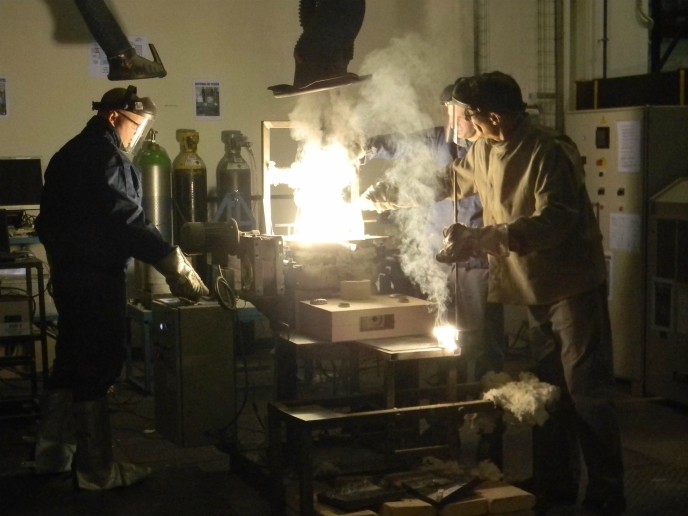New recovery processes for high-performance and low-cost rare earth-magnesium alloys
Regulations are now demanding greater fuel efficiency, and designs for aerospace and automotive structures are becoming more complex. Meeting thus expectations for components of higher performance can therefore be challenging. The lightest of all metal elements, magnesium, requires less energy during production, and designs can be more sophisticated without sacrificing strength. The metal can be cast into various mechanical parts and used for virtually any structures that need to be lighter and stronger. However, its poor corrosion and creep properties as well as service temperature hinder its wide market acceptance. Funded by the EU, the goal of REMAGHIC was to recycle magnesium metals from industrial waste and combine them with secondary rare earth elements (REEs) to produce higher-performance alloys compared to prime magnesium. “Our motto, ‘high-performance rare earth-magnesium alloys at the cost of prime magnesium’ successfully reflects our mission,” notes project coordinator Blanca Araujo. The team tried out different mixtures containing magnesium and REEs that are suitable for engineering applications and that can be recycled in an eco-friendly manner to solve the price problem. Fostering a recycling culture The combined effort of the project teams led to a closed-loop recycling process for magnesium alloy production. This is key to improving Europe’s sustainability to reduce its dependence on raw materials, supporting a circular economy model of reusing and recycling rather than discharging materials as waste. Project members developed different techniques for the recovery of both REE and magnesium, reclaiming these useful elements from industrial waste residues, and dross/scrap piles, respectively. In particular, they reported various processes including mechanical processing, hydrometallurgy, solvometallurgy and pyrometallurgy for extracting and separating REEs from lamp phosphors, cathode ray tubes and nickel-metal hydride batteries. “The final recovery route we selected reached technology readiness level 5. “We succeeded in recovering very high percentages of yttrium oxide from lamps, as well as of lanthanum and cerium oxides from batteries,” notes Araujo. The team also demonstrated improved low-cost techniques for recycling magnesium that require very low energy. “Magnesium recycling can be more dangerous than casting given that the material is highly flammable. We showed how magnesium foundries can recycle their own scraps instead of directly re-melting them in the crucible which ultimately creates more impurities,” adds Araujo. Another project achievement was the manufacture and validation of an industrial facility specifically targeted at recycling magnesium alloys. The facility producing ingots at 240 kg/h in full production can be plugged to any magnesium foundry. Practical applications As part of REMAGHIC, a prototype of a tailgate was designed to show how magnesium alloys could be used in the automotive industry. In addition, an aircraft’s pivot fitting was redesigned to demonstrate that the combination of recycled magnesium and primary REE is cheaper and lighter when compared to titanium. The biomedical field is another area where magnesium and its alloys can play a major role. The material holds promise for use in medical implants. Compared to titanium, which is widely used, it is more similar in strength to bones and it biodegrades. “If you had a screw made of magnesium in your wrist, you wouldn’t need a second surgery to remove it,” says Araujo.
Keywords
REMAGHIC, magnesium, alloy, recycling, rare-earth elements (REEs), automotive, aerospace, biomedical, medical implant







